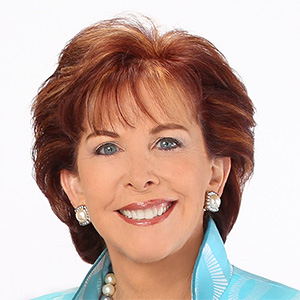Global bond selloff leaves US Treasury yields flirting with 5%
Published in Business News
The selloffs that keep flaring in the world’s bond markets are rapidly pushing yields toward key thresholds due to escalating worries about elevated inflation, tempestuous politics and swelling government debts.
In the U.S., the 10-year Treasury yield rose as high as 4.73% Wednesday, pushing it toward the 5% peak hit in October 2023, before pulling back down. In the U.K. that yield hit as much as 4.82%, the highest since August 2008, in an echo of the selloff that ended Liz Truss’s brief stint as prime minister a little over two years ago.
Even in Japan, which had once been the world’s major holdout as central banks tightened monetary policy, the 10-year rate on government bonds has pushed over 1% to the highest in over a decade.
The movements extend what has been a steadily building pressure on bonds worldwide as the U.S. economy continues to expand at a solid pace and inflation threatens to keep interest rates elevated.
President-elect Donald Trump’s victory has stoked the shift, with his tariff and tax-cut policies casting uncertainty over global trade and the U.S.’s ability to keep rolling over its swelling debt without investors demanding higher payouts.
“The U.S. market is having an outsized effect as investors grapple with sticky inflation, robust growth and the hyper-uncertainty of incoming President Trump’s agenda,” said James Athey, a portfolio manager at Marlborough Investment Management.
The rise in yields is coming even after central banks have started to nudge their benchmark interest rates lower to keep tight monetary policy from stalling their economies.
But while inflation is down sharply from its post-pandemic highs, in the U.S. it has continued to hold stubbornly above the Federal Reserve’s target as the economy keeps surprising forecasters with its resilience. On Tuesday, data showed an unexpected jump in job openings and rising prices in the service sector, solidifying expectations that the Fed won’t ease monetary policy again until mid-2025.
Money managers are also raising fresh concerns about mounting government debts after a year of elections worldwide shook up the status quo. In recent days, those pressures drove 30-year debt costs in the U.K. to the highest since 1998, reigniting questions about the government’s fiscal sustainability.
In the U.S., the forces have sent yields up sharply since the Fed began cutting interest rates in September, with the 10-year rate rising more than a full percentage point. While Wednesday’s jump faded by mid-day, leaving it little changed on the day, it’s holding at the highest since April.
Targeting next test
Firms including Amundi SA, Citi Wealth and ING are warning of the risk that yields are likely to remain higher and options traders are targeting 5% as the next key threshold for the 10-year Treasury. The 20-year Treasury hit that level on Wednesday.
That shift marks another reckoning for investors who for the past several years have been burned by bets that bonds were finally poised to rally.
“Treasury yields at 5% is definitely on the cards,” said Lilian Chovin, head of asset allocation at Coutts. “There’s a risk premium, a term premium going on with the very large fiscal deficits.”
The strains have come into focus as the U.S. government issues a whopping $119 billion worth of new debt this week. A sale of 30-year bonds lies ahead at 1 p.m. New York time and stands to draw the highest yield since 2007 — like the 10-year auction did on Tuesday. The Treasury also sold three-year notes on Monday.
Shifts in open interest data on U.S. 10-year note futures indicate that traders have added to bets on higher yields every day so far this year, likely helping to exacerbate the yield’s move closer to 5%. The data also offered evidence that traders had strong appetite for new bearish wagers.
Such a rapid build-up of short positions in the first days of 2025, of course, stands to potentially spur volatility around upcoming economic data releases. That puts bond investors on high alert ahead of readings of the U.S. labor market on Friday and consumer price inflation next Wednesday.
Higher yields also raise the stakes as Fed officials — who’ve cut borrowing costs three times this cycle — aim to get inflation under control without triggering a downturn of the economy.
Fed Governor Christopher Waller on Wednesday said he believes inflation will continue to cool toward the central bank’s 2% target, offering support for additional cuts this year.
_____
(With assistance from Sujata Rao and Edward Bolingbroke.)
_____
©2025 Bloomberg News. Visit at bloomberg.com. Distributed by Tribune Content Agency, LLC.












Comments